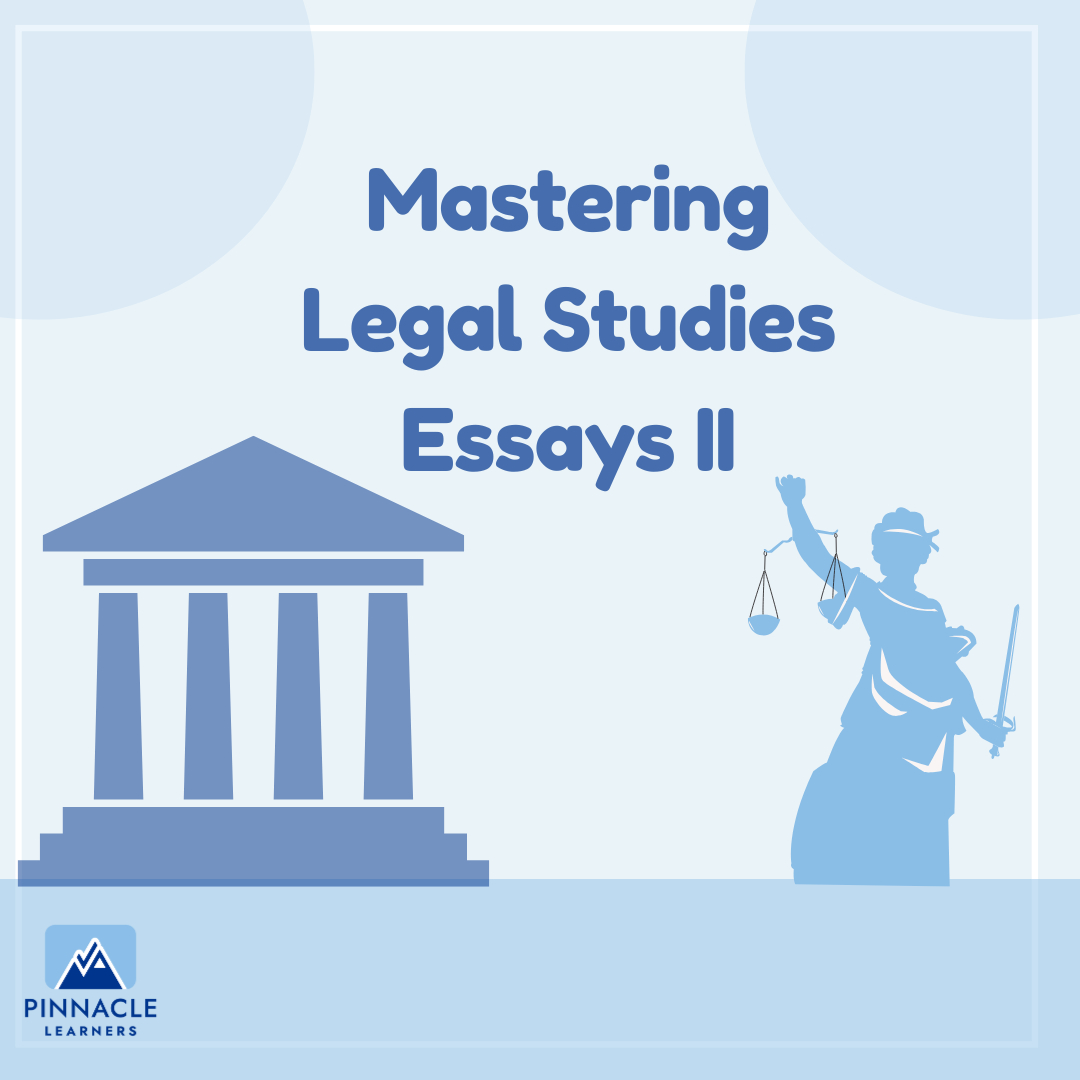Mastering Legal Studies II
In our previous post, we covered how to understand and unpack the different type of essay questions, and how to write a compelling introduction for your Legal Studies essays. A well-crafted introduction sets the tone for your essay and establishes your argument, but it’s the body paragraphs where you really demonstrate your analytical skills and depth of understanding. This is where you unpack the essay question, analyze the law, and integrate evidence to support your arguments. Writing strong body paragraphs is about more than just stating facts. It’s about weaving together analysis, evidence, and commentary to create a coherent and compelling argument.
In this post, we’ll break down the process step by step, offering detailed explanations, practical examples, and expert tips to help you write body paragraphs that not only answer the question but also elevate your essay to Band 6 level.
The Purpose of a Body Paragraph
A body paragraph is more than just an opportunity to "content dump." It’s where most of your marks come from, so it should be structured logically and cohesively. Each paragraph should:
Address the question and display a clear position on the law
Showcase your ability to critically analyze the law.
Use evidence (legislation, cases, media, and statistics) to support your argument.
Link back to your thesis
1. Start with a Clear Topic Sentence
The topic sentence introduces the focus of your paragraph and signals your argument to the reader. Think of it as a roadmap that outlines the specific law, its effectiveness, and how it ties into the essay's theme or challenge.
Key Elements of a Topic Sentence:
Name the specific legal area (e.g., arrests, bail, police powers).
Make a judgment about the law’s effectiveness (e.g., limited, moderate, or high effectiveness).
Link to the theme or challenge from the question (e.g., balancing rights, compliance, achieving justice).
Provide a reason for your judgment.
2. Introduce the Relevant Law
Provide a brief overview of the legal framework that underpins your argument. This includes citing the legislation and summarizing its key provisions.
Tips for Introducing the Law:
Name the statute and its year.
Quote or paraphrase key sections of the law.
Keep it concise; only include the parts relevant to your analysis.
3. Analyze the Law in Practice
This is the core of your paragraph, where you evaluate the law’s effectiveness. Break it down into two parts:
A. What the Law Does Well
Discuss how the law successfully addresses the theme or challenge. Be specific about the outcomes it achieves.
B. Where the Law Falls Short
Critique the law’s limitations or failures. Link these issues to the question’s theme or challenge.
Pro Tip: Use transitional phrases like "however," "in contrast," or "while" to highlight the tension between the law’s strengths and weaknesses.
4. Use a Case Study to Support Your Argument
Case studies provide real-world evidence of how the law operates in practice. They make your argument more persuasive and relatable.
How to Use a Case Study:
Briefly outline the facts: What happened?
Explain the court’s decision: What did the court rule, and why?
Tie it back to your analysis: How does this case illustrate the law’s effectiveness or limitations?
A case study like this illustrates the real-world consequences of the law’s shortcomings, making your argument more compelling.
5. Incorporate Additional Evidence
To strengthen your argument, include other forms of evidence, such as statistics, media reports, or expert opinions.
Using diverse evidence shows your depth of research and understanding of the topic. If using media articles, try to find them from reputable news sources - Sydney Morning Herald, ABC, The Guardian, etc.
6. Link Back to the Question
End your paragraph by tying your analysis back to the essay question. Restate your judgment and reinforce how your evidence supports it.
This linking sentence ensures your paragraph remains focused and ties back to your thesis.
Complete Body Paragraph Example
Here’s what a fully developed body paragraph looks like:
Final Thoughts
Writing strong body paragraphs is about balancing clarity, analysis, and evidence. Each paragraph should answer the question, support your thesis, and provide a nuanced evaluation of the law’s effectiveness. If you follow this structure, you’ll be well on your way to producing high-quality Legal Studies essays that stand out to markers.
If you’re looking for personalized guidance or extra support to achieve your academic goals, we’re here for you! At Pinnacle Learners, we offer tutoring and mentoring for Years 7–12 in Legal Studies and English, with private lessons available at our Rozelle center or online via Skype. Our dedicated tutors have helped students across the Inner West—Balmain, Birchgrove, Rozelle, Leichhardt, and beyond—boost their results by 20% or more.
Book in a free 10 minute consultation call to find out how we can help you succeed in your High School studies.









